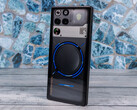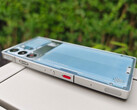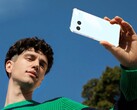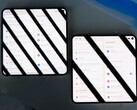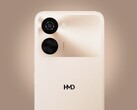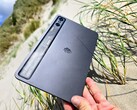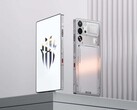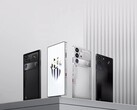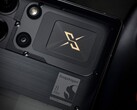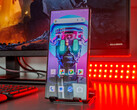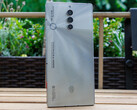Verdict: Strong gaming smartphone with gaps in everyday use
The RedMagic 10S Pro is a powerful smartphone for anyone on the lookout for fast hardware and enjoys gaming. With its responsive display and additional sensor buttons, it offers real added value in these areas.
There are no cutouts in the display for the selfie camera, which lends to an uninterrupted viewing experience; the rear cameras sit absolutely flush with the body as well — neither of which can be found on any other competitor in this price range.
The fast Snapdragon 8 Elite Leading Version nominally makes the Nubia RedMagic 10S Pro the fastest smartphone. However, it is often unable to exploit this advantage as the 10S Pro cannot always cope with the heat generated despite the fan being active. Moreover, the surface temperatures can rise quite high.
A few compromises also have to be made in everyday use, as the RedMagic 10S Pro does not support eSIM or wireless charging. Although the update cycle has been extended, it is still not optimal, and the cameras are only in the mid-range.
Pros
Cons
Price and availability
The tested variant of the Nubia RedMagic 10S Pro can be purchased for $799 directly from the manufacturer's online store, which also stocks other color and memory variants.
Alternatively, the 10S Pro can also be had from Amazon DE and Amazon US.
Table of Contents
- Verdict: Strong gaming smartphone with gaps in everyday use
- Specifications: RedMagic 10S Pro
- Case and features: The RedMagic 10S Pro is not waterproof
- Software and sustainability: Android 15 with longer update cycle than before
- Cameras: Mediocre optics in the RedMagic 10S Pro
- Display: Fast AMOLED with up to 960 Hz touch sampling
- RedMagic 10S Pro: Further measurements and performance testing
- Notebookcheck's overall impressions of the Nubia RedMagic 10S Pro
- Potential alternatives in comparison
The RedMagic 10S Pro is an upgrade of the RedMagic 10 Pro and offers a faster SoC, RAM and internal memory as well as nominally more powerful camera sensors.
It starts at an RRP of 649 euros for the entry-level model with 12/256 GB and climbs up to 999 euros for the model with 24 GB RAM and 1 TB internal storage.
Specifications: RedMagic 10S Pro
Case and features: The RedMagic 10S Pro is not waterproof
The RedMagic 10S Pro once again uses the bezel design of its predecessor and comes in three new color options: Nightfall, Dusk, and Moonlight. The workmanship is of a high quality, and the phone impresses with narrow display edges although it creaks slightly when twisted.
The cameras are located under the rear glass cover, so there is no camera bump. Unfortunately, the gaming phone is neither dustproof nor waterproof and only comes with an IP54 certification.
The onboard features are impressive. The RedMagic 10S Pro is powered by the Snapdragon 8 Elite Leading Version, with a higher peak clock rate for both the CPU and GPU than the standard variant.
In addition, there is state-of-the-art UFS 4.1 storage, LPDDR5T RAM, and USB 3.2 Gen2 connectivity — that's as good as it gets in these areas at the moment. There are also two sensor buttons that can be used for control in games.
The integrated fan can be optionally activated, but it hardly makes any difference. With noise levels up to 44 dB(A), the fan can get quite loud.
The RedMagic 10S Pro offers good communication hardware that includes 5G and Wi-Fi 7, but the voice quality is only average and there is no eSIM support. The linear vibration motor provides crisp feedback, and an optical fingerprint sensor is available for biometric security.
Software and sustainability: Android 15 with longer update cycle than before
The RedMagic 10S Pro comes with Google's Android 15 and RedMagicOS 10.5. In the EU and the UK, the update period is extended to five years (three years, otherwise), which is still below the EU requirements. At the time of testing, the security updates were up to date as of May 1, 2025.
The outer packaging contains a lot of plastic and RedMagic does not provide any information on sustainability. In the EU energy label the battery is indicated as replaceable, but this cannot be done by the user as Nubia offers neither suitable spare parts nor instructions.
Cameras: Mediocre optics in the RedMagic 10S Pro
The front camera of the RedMagic 10S Pro is located under the display, allowing an uninterrupted view of the content. However, the quality is rather mediocre, with many details drowning in a coarse sea of pixels while the photos are highly saturated.
Although the rear lenses offer high resolutions for the most part, the image quality here is rather mediocre and at the level of a mid-range smartphone. Zoom shots are not good even at low magnification levels and a 10x zoom is already the end of the line.
Videos are recorded on the front camera in full HD 30 fps. The main camera on the back allows recordings in 8K 30 fps and 4k 60 fps among others.



Display: Fast AMOLED with up to 960 Hz touch sampling
The 6.85-inch AMOLED display of the RedMagic 10S Pro has a refresh rate of up to 144 Hz and a multi-touch sampling rate of up to 960 Hz. The resolution is high, ensuring an appealing pixel density. The factory color calibration is impressive as well.
The brightness of the panel is high but does not come close to the top values of the competition. The minimum luminosity is also slightly higher.
The display flickers at a basic frequency of 120 Hz, but also uses high-frequency PWM dimming, which flickers at 2,083 Hz at minimum display brightness and should therefore be comparatively easy on the eyes.
| |||||||||||||||||||||||||
Brightness Distribution: 91 %
Center on Battery: 1442 cd/m²
Contrast: ∞:1 (Black: 0 cd/m²)
ΔE ColorChecker Calman: 2 | ∀{0.5-29.43 Ø4.78}
ΔE Greyscale Calman: 2.3 | ∀{0.09-98 Ø5}
98.6% sRGB (Calman 2D)
Gamma: 2.38
CCT: 6284 K
| Nubia RedMagic 10S Pro AMOLED, 2688x1216, 6.9" | Asus ROG Phone 9 Pro AMOLED, 2400x1080, 6.8" | Samsung Galaxy S25 AMOLED, 2340x1080, 6.2" | Xiaomi 15 OLED, 2670x1200, 6.4" | |
|---|---|---|---|---|
| Screen | 25% | -17% | 0% | |
| Brightness middle (cd/m²) | 1442 | 1682 17% | 1301 -10% | 1021 -29% |
| Brightness (cd/m²) | 1453 | 1685 16% | 1311 -10% | 1018 -30% |
| Brightness Distribution (%) | 91 | 97 7% | 98 8% | 98 8% |
| Black Level * (cd/m²) | ||||
| Colorchecker dE 2000 * | 2 | 1.1 45% | 3.1 -55% | 1.3 35% |
| Colorchecker dE 2000 max. * | 3.3 | 2.1 36% | 4.4 -33% | 2.9 12% |
| Greyscale dE 2000 * | 2.3 | 1.7 26% | 2.3 -0% | 2.2 4% |
| Gamma | 2.38 92% | 2.27 97% | 2.01 109% | 2.25 98% |
| CCT | 6284 103% | 6581 99% | 6454 101% | 6658 98% |
* ... smaller is better
| Display / APL18 Peak Brightness | |
| Samsung Galaxy S25 | |
| Nubia RedMagic 10S Pro | |
| Display / HDR Peak Brightness | |
| Samsung Galaxy S25 | |
| Nubia RedMagic 10S Pro | |
Screen Flickering / PWM (Pulse-Width Modulation)
| Screen flickering / PWM detected | 120 Hz Amplitude: 13.92 % Secondary Frequency: 2083 Hz | ||
The display backlight flickers at 120 Hz (worst case, e.g., utilizing PWM) . The frequency of 120 Hz is very low, so the flickering may cause eyestrain and headaches after extended use. In comparison: 53 % of all tested devices do not use PWM to dim the display. If PWM was detected, an average of 8091 (minimum: 5 - maximum: 343500) Hz was measured. | |||
Display Response Times
| ↔ Response Time Black to White | ||
|---|---|---|
| 1 ms ... rise ↗ and fall ↘ combined | ↗ 0.49 ms rise | |
| ↘ 0.5135 ms fall | ||
| The screen shows very fast response rates in our tests and should be very well suited for fast-paced gaming. In comparison, all tested devices range from 0.1 (minimum) to 240 (maximum) ms. » 3 % of all devices are better. This means that the measured response time is better than the average of all tested devices (20.2 ms). | ||
| ↔ Response Time 50% Grey to 80% Grey | ||
| 1.08 ms ... rise ↗ and fall ↘ combined | ↗ 0.468 ms rise | |
| ↘ 0.609 ms fall | ||
| The screen shows very fast response rates in our tests and should be very well suited for fast-paced gaming. In comparison, all tested devices range from 0.165 (minimum) to 636 (maximum) ms. » 4 % of all devices are better. This means that the measured response time is better than the average of all tested devices (31.6 ms). | ||
RedMagic 10S Pro: Further measurements and performance testing
| Networking | |
| Nubia RedMagic 10S Pro | |
| iperf3 transmit AXE11000 6GHz | |
| iperf3 receive AXE11000 6GHz | |
| Asus ROG Phone 9 Pro | |
| iperf3 transmit AXE11000 | |
| iperf3 receive AXE11000 | |
| iperf3 transmit AXE11000 6GHz | |
| iperf3 receive AXE11000 6GHz | |
| Samsung Galaxy S25 | |
| iperf3 transmit AXE11000 | |
| iperf3 receive AXE11000 | |
| iperf3 transmit AXE11000 6GHz | |
| iperf3 receive AXE11000 6GHz | |
| Xiaomi 15 | |
| iperf3 transmit AXE11000 | |
| iperf3 receive AXE11000 | |
| iperf3 transmit AXE11000 6GHz | |
| iperf3 receive AXE11000 6GHz | |
| Average Wi-Fi 7 | |
| iperf3 transmit AXE11000 | |
| iperf3 receive AXE11000 | |
| iperf3 transmit AXE11000 6GHz | |
| iperf3 receive AXE11000 6GHz | |
| Average of class Smartphone | |
| iperf3 transmit AXE11000 | |
| iperf3 receive AXE11000 | |
| iperf3 transmit AXE11000 6GHz | |
| iperf3 receive AXE11000 6GHz | |
| Nubia RedMagic 10S Pro | Asus ROG Phone 9 Pro | Samsung Galaxy S25 | Xiaomi 15 | Average 512 GB UFS 4.1 Flash | Average of class Smartphone | |
|---|---|---|---|---|---|---|
| AndroBench 3-5 | 2% | -40% | -17% | -15% | -43% | |
| Sequential Read 256KB (MB/s) | 3948.03 | 4026.96 2% | 3982.43 1% | 3934.92 0% | 3734 ? -5% | 2243 ? -43% |
| Sequential Write 256KB (MB/s) | 3499.89 | 3773.6 8% | 2256.71 -36% | 3889.06 11% | 3209 ? -8% | 1865 ? -47% |
| Random Read 4KB (MB/s) | 450.84 | 441.13 -2% | 299.89 -33% | 296.95 -34% | 380 ? -16% | 296 ? -34% |
| Random Write 4KB (MB/s) | 634.2 | 637.2 0% | 51.76 -92% | 360.36 -43% | 438 ? -31% | 339 ? -47% |
(-) The maximum temperature on the upper side is 55 °C / 131 F, compared to the average of 35.2 °C / 95 F, ranging from 21.9 to 247 °C for the class Smartphone.
(-) The bottom heats up to a maximum of 53.4 °C / 128 F, compared to the average of 34 °C / 93 F
(+) In idle usage, the average temperature for the upper side is 30.6 °C / 87 F, compared to the device average of 32.9 °C / 91 F.
3DMark Steel Nomad Stress Test
| 3DMark | |
| Wild Life Stress Test Stability | |
| Asus ROG Phone 9 Pro | |
| Nubia RedMagic 10S Pro | |
| Xiaomi 15 | |
| Samsung Galaxy S25 | |
| Steel Nomad Light Stress Test Stability | |
| Asus ROG Phone 9 Pro | |
| Asus ROG Phone 9 Pro | |
| Nubia RedMagic 10S Pro | |
| Xiaomi 15 | |
Nubia RedMagic 10S Pro audio analysis
(+) | speakers can play relatively loud (89.1 dB)
Bass 100 - 315 Hz
(-) | nearly no bass - on average 24.9% lower than median
(±) | linearity of bass is average (10.8% delta to prev. frequency)
Mids 400 - 2000 Hz
(±) | higher mids - on average 7.8% higher than median
(+) | mids are linear (5.7% delta to prev. frequency)
Highs 2 - 16 kHz
(±) | higher highs - on average 7.5% higher than median
(+) | highs are linear (4.6% delta to prev. frequency)
Overall 100 - 16.000 Hz
(±) | linearity of overall sound is average (21.6% difference to median)
Compared to same class
» 43% of all tested devices in this class were better, 8% similar, 50% worse
» The best had a delta of 11%, average was 35%, worst was 134%
Compared to all devices tested
» 60% of all tested devices were better, 7% similar, 33% worse
» The best had a delta of 4%, average was 24%, worst was 134%
Asus ROG Phone 9 Pro audio analysis
(+) | speakers can play relatively loud (90.1 dB)
Bass 100 - 315 Hz
(-) | nearly no bass - on average 20% lower than median
(±) | linearity of bass is average (7.2% delta to prev. frequency)
Mids 400 - 2000 Hz
(±) | reduced mids - on average 5.6% lower than median
(+) | mids are linear (5.5% delta to prev. frequency)
Highs 2 - 16 kHz
(+) | balanced highs - only 3.4% away from median
(+) | highs are linear (4% delta to prev. frequency)
Overall 100 - 16.000 Hz
(±) | linearity of overall sound is average (16.1% difference to median)
Compared to same class
» 5% of all tested devices in this class were better, 4% similar, 90% worse
» The best had a delta of 11%, average was 35%, worst was 134%
Compared to all devices tested
» 25% of all tested devices were better, 5% similar, 70% worse
» The best had a delta of 4%, average was 24%, worst was 134%
| Battery runtime - WiFi v1.3 | |
| Nubia RedMagic 10S Pro | |
| Asus ROG Phone 9 Pro | |
| Samsung Galaxy S25 | |
| Xiaomi 15 | |
Notebookcheck's overall impressions of the Nubia RedMagic 10S Pro
The Nubia RedMagic 10S Pro is heavily specialized in gaming and has a strong feature set for this. In everyday use, however, we miss a few functions such as a higher IP certification, eSIM support, and wireless charging. The update supply is also not optimal.
Nubia RedMagic 10S Pro
- 08/12/2025 v8
Daniel Schmidt
Potential alternatives in comparison
Image | Model / Review | Price | Weight | Drive | Display |
|---|---|---|---|---|---|
| Nubia RedMagic 10S Pro Qualcomm Snapdragon 8 Elite ⎘ Qualcomm Adreno 830 ⎘ 16 GB Memory, 512 GB | Amazon: List Price: 799€ | 229 g | 512 GB UFS 4.1 Flash | 6.85" 2688x1216 431 PPI AMOLED | |
| Asus ROG Phone 9 Pro Qualcomm Snapdragon 8 Elite ⎘ Qualcomm Adreno 830 ⎘ 24 GB Memory, 1024 GB | Amazon: 1. $11.99 Ibywind Screen Protector for... 2. $11.99 Guizzcg 2 Pack Screen Protec... 3. $7.99 beukei compatible for ASUS R... List Price: 1499€ | 227 g | 1 TB UFS 4.0 Flash | 6.78" 2400x1080 388 PPI AMOLED | |
| Samsung Galaxy S25 Qualcomm Snapdragon 8 Elite for Galaxy ⎘ Qualcomm Adreno 830 ⎘ 12 GB Memory, 256 GB | Amazon: 1. Samsung Galaxy S25 Ultra, 25... 2. $1,029.99 SAMSUNG Galaxy S25 Ultra SM-... 3. $1,119.00 Samsung Galaxy S25 Ultra ... List Price: 899€ | 162 g | 256 GB UFS 4.0 Flash | 6.20" 2340x1080 416 PPI AMOLED | |
| Xiaomi 15 Qualcomm Snapdragon 8 Elite ⎘ Qualcomm Adreno 830 ⎘ 12 GB Memory, 512 GB | Amazon: 1. $11.99 Ibywind 2 Pack Screen Protec... 2. $11.99 Ibywind for Xiaomi 15 Ultra ... 3. $7.99 Suttkue for Xiaomi 15 Screen... List Price: 760€ | 191 g | 512 GB UFS 4.0 Flash | 6.36" 2670x1200 460 PPI OLED |
Transparency
The selection of devices to be reviewed is made by our editorial team. The test sample was provided to the author as a loan by the manufacturer or retailer for the purpose of this review. The lender had no influence on this review, nor did the manufacturer receive a copy of this review before publication. There was no obligation to publish this review. As an independent media company, Notebookcheck is not subjected to the authority of manufacturers, retailers or publishers.
This is how Notebookcheck is testing
Every year, Notebookcheck independently reviews hundreds of laptops and smartphones using standardized procedures to ensure that all results are comparable. We have continuously developed our test methods for around 20 years and set industry standards in the process. In our test labs, high-quality measuring equipment is utilized by experienced technicians and editors. These tests involve a multi-stage validation process. Our complex rating system is based on hundreds of well-founded measurements and benchmarks, which maintains objectivity. Further information on our test methods can be found here.




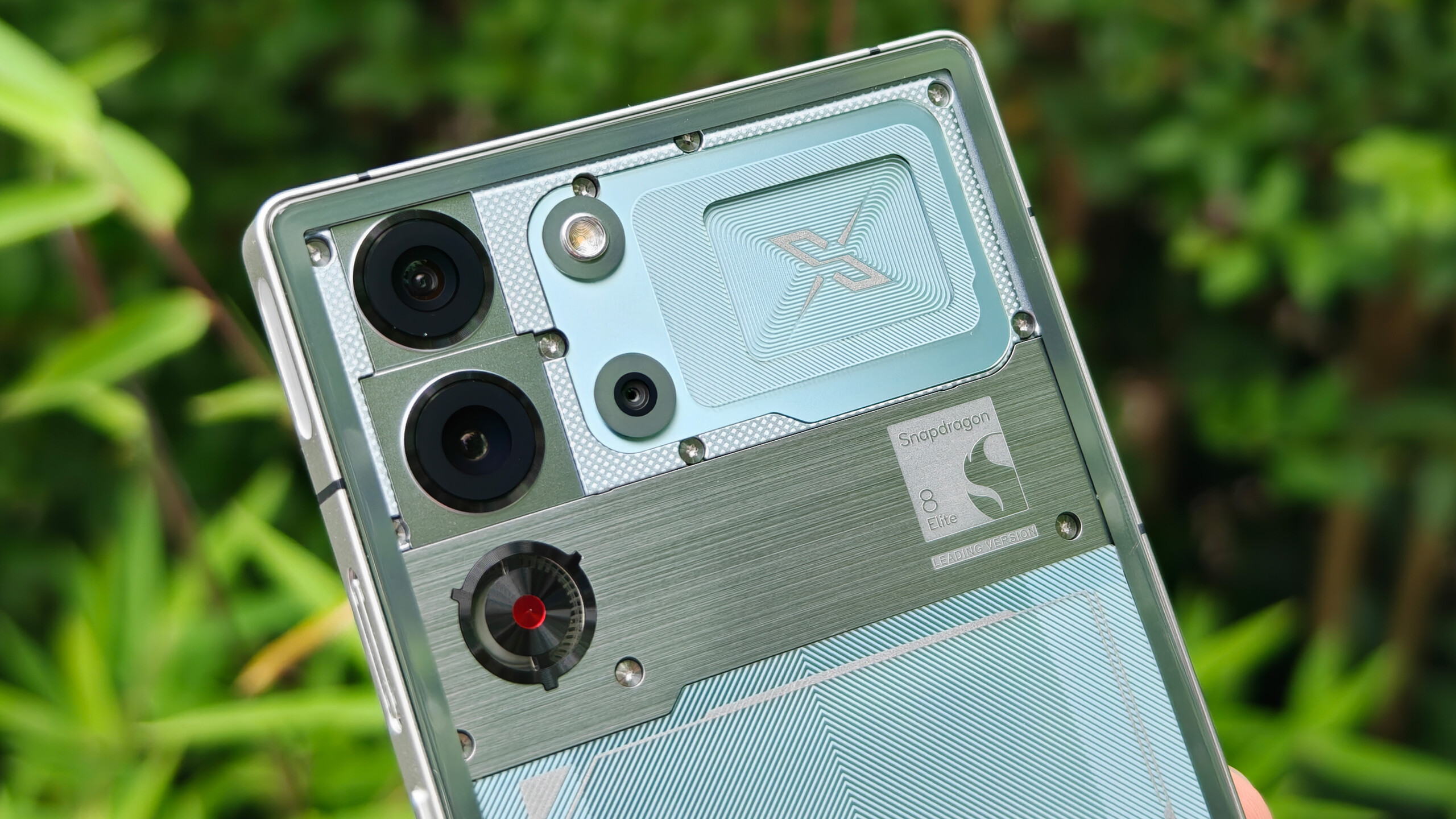













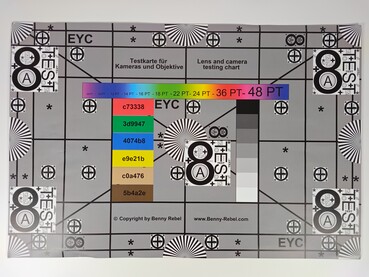

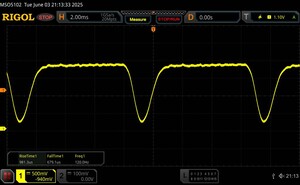
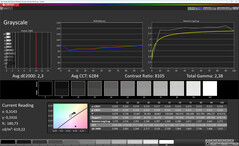


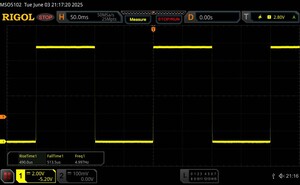
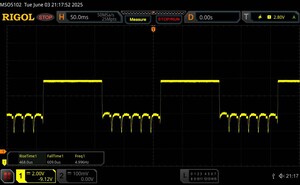
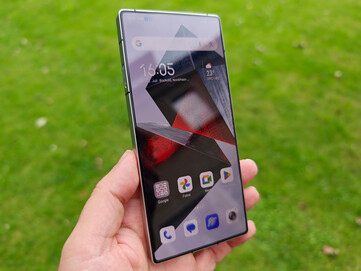
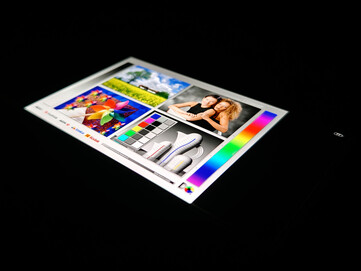
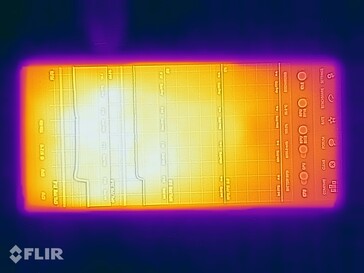
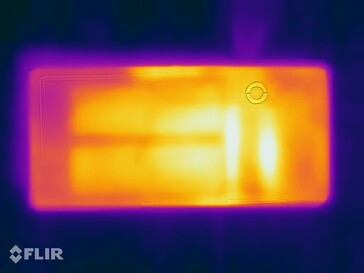
 Total Sustainability Score:
Total Sustainability Score: 



